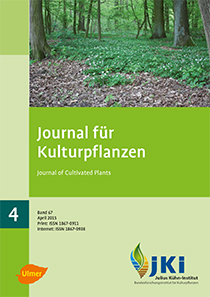First Experiences with Black Fungus Gnats (Sciaridae) to Biological Control of Broad-Leaved Dock (<em>Rumex obtusifolius</em> L.)
Keywords:
Broad-leaved dock, Rumex obtusifolius L., black fungus gnats, biological controlAbstract
In seven out of eight examined stocks of broad-leaved dock larvae of black fungus gnats existed in the tap roots. Rarely, larvae of weevils and caterpillars occurred in and around the tap roots. The continuous eating of the larvae of black fungus gnats in the tap roots has the following effects in subsequent regrowths and years: the height of dock plants decreases, no more flowering shoots are formed, and the number and size of leaves reduces until the completely destroyed tap roots do no longer sprout. In the stock of dock where black fungus gnats have been detected first, the area clear of dock increased from 110 m² to 499 m² within three and a half years. The small stock of dock in Bermbach extinguished after two years, the stocks at Henneberger Haus near Schmalkalden and at Themar disappeared after five years.
Successful biological control of broad-leaved dock is possible when larvae of black fungus gnats are present in the tap roots and farming prevents the dock seeds from ripening.
DOI: 10.5073/JfK.2015.04.04, https://doi.org/10.5073/JfK.2015.04.04
Downloads
Published
Issue
Section
License
The content of the journal is licensed under the Creative Commons Attribution 4.0 License. Any user is free to share and adapt (remix, transform, build upon) the content as long as the original publication is attributed (authors, title, year, journal, issue, pages).
The copyright of the published work remains with the authors. The authors grant the Journal of Cultivated Plants, the Julius Kühn-Institut and the OpenAgrar repository the non-exclusive right to distribute and exploit the work.







